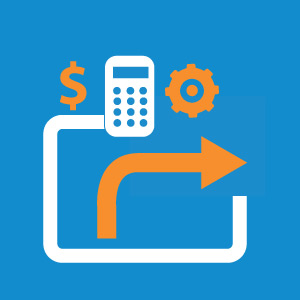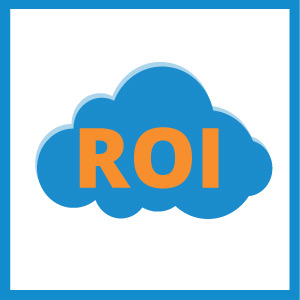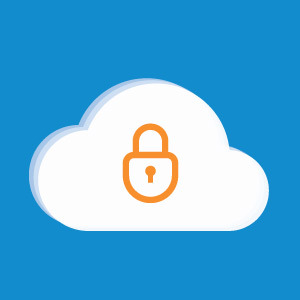Sage Intacct User Permissions Give Companies’ the Ability to Scale
Sage Intacct’s User Permissions is one of the key benefits of the software that gives companies the flexibility and security they need as their business grows. Permissions allow a business to maintain the integrity of the financials by giving their team access to only the functions of the system that are necessary to do their job. An example is an accounts payable (AP) team member who could have access to create and pay bills but not have access to create vendors. Or perhaps you have a team member that needs to view bills within AP but not have the ability to edit or delete.
Sage Intacct’s permissions allow companies to easily build out their system and their users’ accessibility to their exact needs and use.
Why Would You Want Permissions?
There are many reasons why but a primary reason is to segregate duties and define a user’s role. While many companies start with one employee that fills many roles, as you grow and add staff you can deploy user permissions to define access rights and limit the functionality available to them within the system. This keeps the employee focused on their job and gives peace of mind that you have the system security in place to protect your financial data.
Permissions can also be used to set thresholds for approvals. For example, a user may have the ability to approve a transaction up to $5,000 but would need their manager’s approval for all transactions greater than $5,000. Approval permissions are customizable and can have multiple levels.
Companies that have more than one entity can give users access to one location, all locations, or a combination of locations. This can be very useful when you need to allow users to work across multiple companies, but don’t want them to access unnecessary or sensitive information.
The benefits of permissions aren’t limited to carrying out tasks. They can also help streamline the reporting process. An example would be giving your leadership team access to the departments they need on their dashboards. This limits their view to the specific information they need without filtering through unnecessary data. Easy access to granular insights will allow your team to make quick decisions with real-time data without an intense, manual process.
Sage Intacct’s permissions provide you with the flexibility and security you need to control access to your system financials. Permissions are managed through an easy to use user interface and provide a complete activity log of all changes.
Take A Tour Of Sage Intacct Now
What are the Different Types of Permissions?
Sage Intacct allows for complete customization with user permissions. You can allow team members the ability to create lists, view, add, edit, delete, reverse, and reclassify as well as giving them access to different entities and modules. The capabilities within Sage Intacct’s user permissions are far superior to their competitors which generally only gives you the option to grant total access to different modules instead of the options for customization based on position. The user permissions are vast and allow for extremely customized user portals even with multiple entities set up.
One unique type of permission is reclassify which allows a user to reclassify a transaction while maintaining an audit log. An example is if you have cleaning service bills that have been coded as outside services, however, there is a separate account for cleaning services you can easily change the coding without having to re-enter the whole bill or enter a reclassifying journal entry. Each reclassification is tracked by Intacct and easily auditable via a pre-built reclassification report allowing you to keep up with changes that have been made in real-time.
Take A Tour Of Sage Intacct Now
How Do User Permissions allow You to Scale?
With Intacct permissions, your company can scale with one ERP platform. Imagine the below situation and think about how permissions quickly go from an afterthought in a startup environment to a critical need in a growing, mid-market business.
As with most startups, you begin with one user that has complete access to the accounting system. As the company grows so does the accounting team, often from one person doing everything to three or four people touching different areas of the company’s finances. Now the company is likely going to have a controller or CFO with complete access, but will also likely have an AP and/or AR clerk(s). Now the company starts worrying about permissions on a high level, like restricting their AP clerk to only AP functions in their accounting software (I.e., not able to access financial reports, book journal entries, etc.) After another few years of growth, the companies finance team is now 6 or 8 people, with three team members dedicated to just AP. All three need access to the AP module, but team member one (AP clerk) needs to only enter bills (not delete or reclassify), team member two (senior AP staff) needs to add/delete/reclassify bills and approve payments up to $500, and team member three (AP manager) needs full access (approve all payments, access all reports). This is a very common example of a high growth company that went from no immediate need for user permissions to user permissions being mission-critical functionality. Sadly, many companies wait until user permissions are already mission-critical to address the need. With Intacct, user permissions are ready when you need them and can be quickly deployed within a matter of minutes.
Take A Tour Of Sage Intacct Now
Overall, user permissions allow your company to scale while giving your team access to everything they need to be successful in their roles. It provides robust security for your company’s data that is in such high demand in today’s digital world. Lastly, it mitigates disgruntled or bumbling employees from being able to damage a business’s financial information.
Download “3 New Approaches for the Data Driven Finance Leader” by filling out the form below, and find out more about how Sage Intacct can help you scale.





